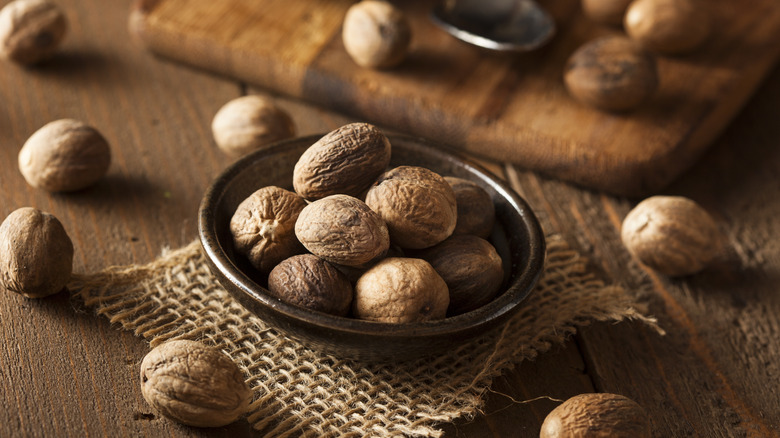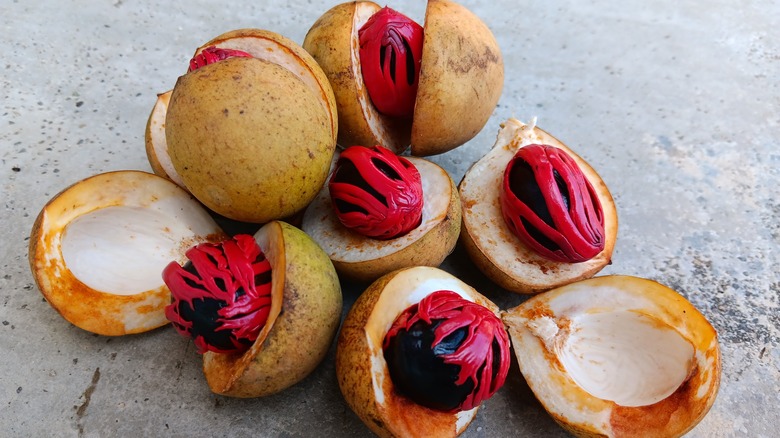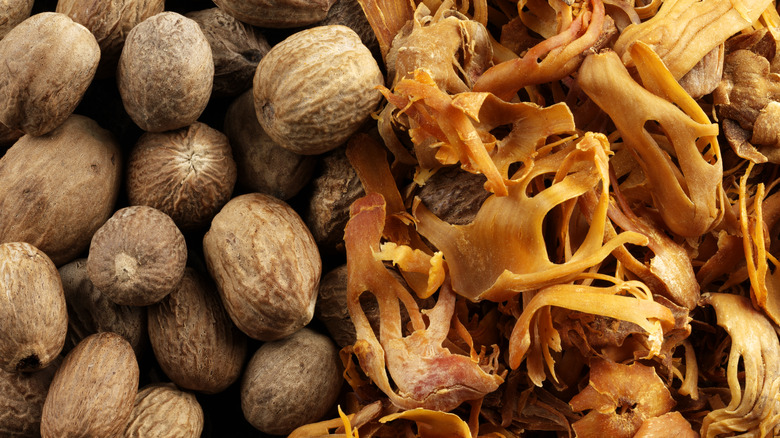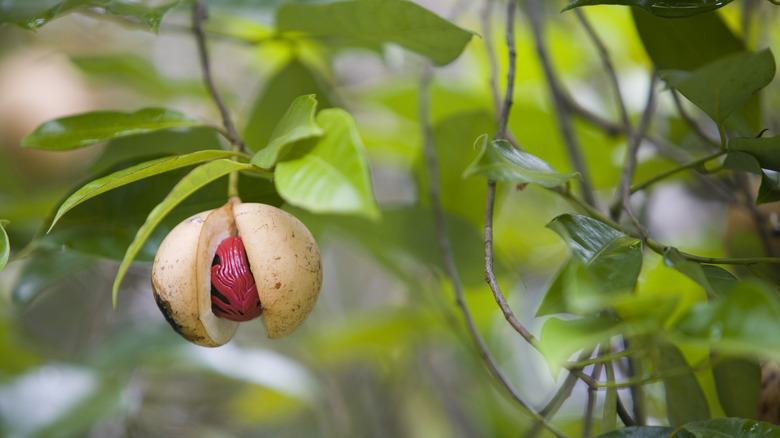East Vs West Indian Nutmeg: What's The Difference?
Best known for its warm flavor, nutmeg is a great spice for sweet and savory dishes. It brings fragrance and warmth to rich bread pudding and just the right touch of slight sweetness to savory dishes like creamed collard greens. Overall, nutmeg is a great multipurpose spice. However, most people do not know that there is more than one type of nutmeg.
Nutmeg originated in an area known as the Spice Islands, specifically on the Banda Islands near Java. The spice spread to different regions over time due to trading via the Spanish, Portuguese, English, and Dutch. Today, nutmeg hails from two major areas: Indonesia and Grenada. These two locations make East Indian and West Indian nutmeg respectively; the former is darker colored and more flavorful, while the latter is lighter colored and milder in flavor.
The biggest difference between the two types of nutmeg is intensity in flavor. As such, they can be used relatively interchangeably, with minor adjustments. For example, East Indian nutmeg can be used instead of West Indian nutmeg as long as it is used in a slightly lesser amount, as its flavor and aroma is noticeably more pungent.
What is East Indian nutmeg?
East Indian nutmeg refers specifically to nutmeg from Indonesia. This type of nutmeg is typically shipped to Europe and Asia and is commonly featured in the cuisines of those locations. In Europe, nutmeg is used in foods like tortellini, dumplings, pies, vegetables, and eggnog. In Asia, nutmeg is commonly used in foods like savory meat dishes, desserts, and even soups.
This type of nutmeg is actually the seed of a fruit. The fruit is round, with a slight pear shape and golden color. The seed has a bright red outer layer that cloaks it within the fruit known as Mace, which is used as a substitute for nutmeg in cooking. The seed itself has a hard outer shell and is round and slightly oblong with a brown color. When the hard outer shell is removed from the seed, it can then be sold either as whole or ground nutmeg in stores.
What is West Indian nutmeg?
West Indian nutmeg is a name used specifically for nutmeg from Grenada, which is an island country that is located in between the Atlantic Ocean and the Caribbean Sea. West Indian nutmeg is mainly exported to the United States specifically. Most of its use in cooking and baking applies to sweets, like pumpkin pie, and it is commonly associated with eggnog as the spice is a key ingredient in the drink. It is also featured prominently in holiday cooking and has become popularly associated with wintertime.
West Indian nutmeg also comes from the inside of a fruit. The fruit that West Indian nutmeg comes from is more brown in color. The shape is more ovular and longer instead of circular, and the seed still has an outer layer but is yellow or orange instead of bright red. The nutmeg seed itself is also noticeably larger in the West Indian variety.
East Indian nutmeg has a stronger scent and flavor
The biggest and most important difference between the two types of nutmeg is taste. Although they can be used interchangeably, East and West Indian nutmeg differ in flavor intensity as well as aromatic strength. Generally speaking, the rule of thumb is to use less East Indian nutmeg when cooking, as it is stronger than West Indian nutmeg.
The reason behind their differences in flavor is due to something known as steam volatile oils, which are the components that cause aroma and flavor in spices. Steam volatile oil is measured by placing a spice in water and heating it until oil separates from the spice. These oils can be extracted for use in food, drinks, medicine, aromatherapy, and more. East Indian nutmeg has a higher steam volatile oil content than the West Indian variety, which is what makes it more aromatic and bursting with flavor.
Differences in origin
Not only are East and West Indian nutmeg grown and harvested in different places and exported to different countries, but they also come from different plants. East Indian nutmeg comes from the fruit of the Myristica fragrans tree, and West Indian nutmeg comes from the Myristica malabarica tree. Although both trees sound similar in name, their origins and appearances are different.
The East Indian nutmeg tree is commonly found in East Asia in places like Indonesia, Sri Lanka, and Malaysia. The tree itself is dense with leaves and has a cone silhouette. Just one of these trees can produce up to 1,500 fruits per year. Meanwhile, the West Indian nutmeg tree is found mainly in southwest India and Bangladesh. This tree is noticeably taller than its East Indian counterpart but is not as viable for harvest due to difficulties with pollination and loss of the tree's natural habitat over time.




